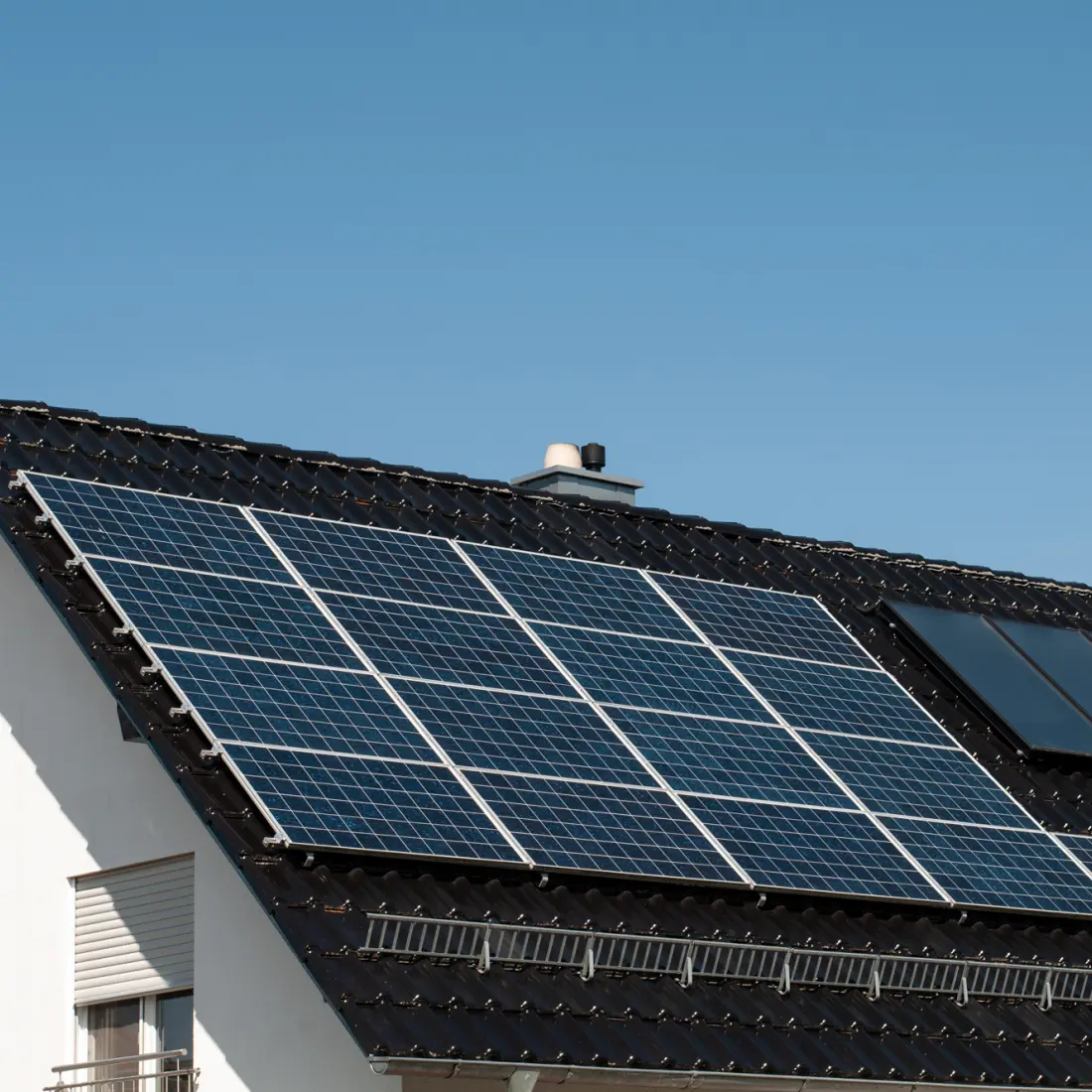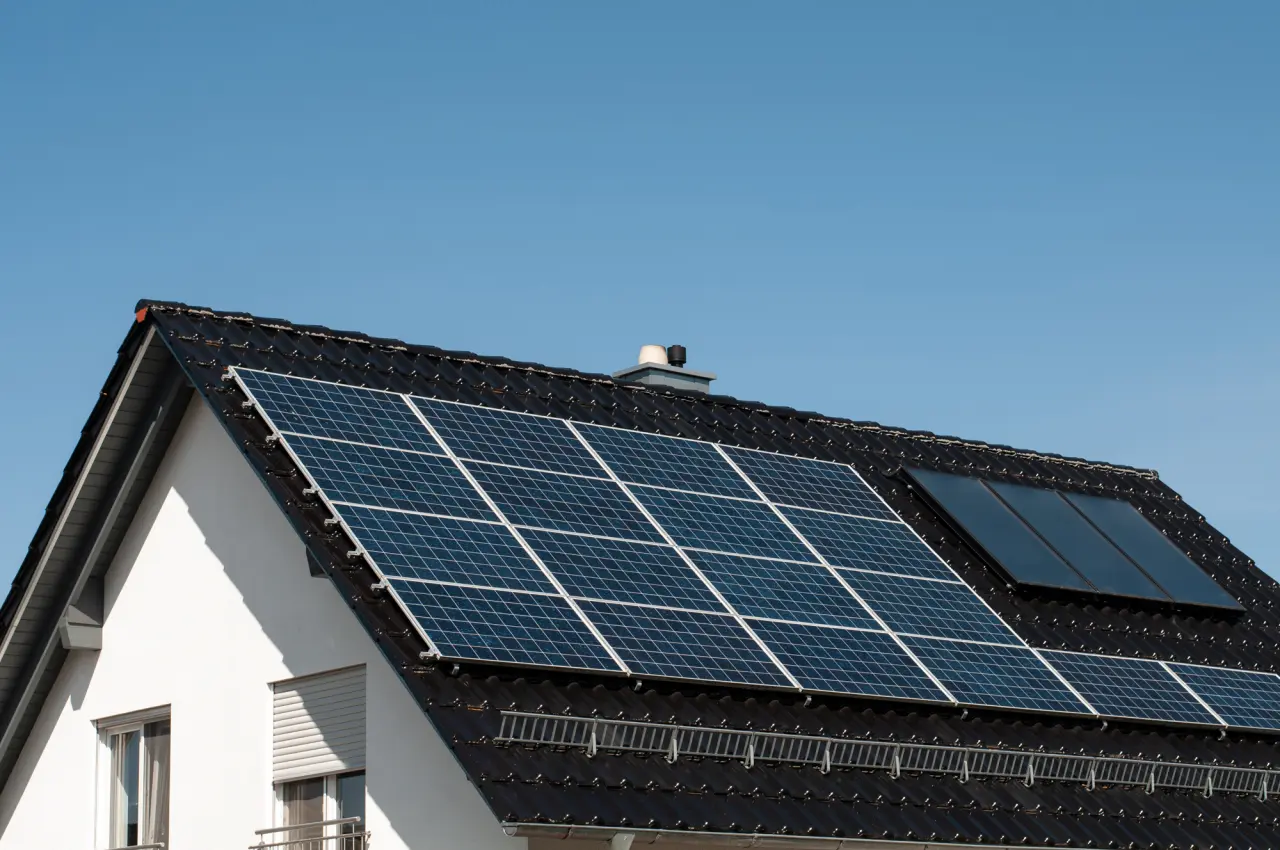Understanding on-grid solar systems. Powering homes and businesses


Grid-tied solar systems try to merge the advantages of solar panels with the convenience of electricity from the power grid. This on-the-grid system has a special connection that feeds the solar energy you do not use in your building to your utility provider’s power lines.
A grid-tied system can flow both ways. You can feed extra electricity back into the grid, but you can also get power from the grid at night or if you need more energy than your panels provide. This is different from an off-grid system, which supplies 100% of the electricity to a building without help from the utility company.
On-grid solar systems can be a good option for many home and business owners. Here is a deeper dive into this option.
Components of a grid-tied solar system
An on-grid solar system has the same components as a regular off-grid system with a few additional important components.
- Solar photovoltaic (PV) panels contain rows of solar cells that absorb light and turn it into an electrical charge.
- An inverter gets the energy produced by the panels via wires. The panels send a direct current (DC), which the inverted changes into an alternating current (AC) that you can use in your home.
- A bi-directional meter connects to both the solar PV system and the grid. It measures the energy you use and the amount that flows to and from the grid.
If your system has a battery, it is typically attached to a charging system before the bi-directional meter.
How grid-tied solar systems operate
The panels create electrical current and feed it via cables to the inverter. The inverter makes the DC-to-AC conversion and sends the electricity to the home for use.
Any electricity that doesn’t get used then flows to the bi-directional meter where the most unique feature of the system takes place. Utility companies use net metering to make a grid-tied set-up worthwhile. For every unit of energy passed into the grid, you get a credit.
Daytime vs. nighttime operation
Solar panels produce their energy during the daytime. They provide peak output during sunny days but also work in overcast conditions. You might not use all the electricity produced during this time. For instance, you won’t need to power many lights during the daytime, and your family may be at work or school, limiting your electrical needs.
At night, the panels stop producing power, but you can use the credits from your excess daytime production to pay for nighttime electricity from the grid.
When calculating the overall energy output of your grid-connected system during different months, consider other factors, such as the length of days during different times of the year.

Advantages of grid-tied solar systems
A grid-tied system can bring you advantages that other solar panel options, such as off-grid systems, can’t offer. Here are the biggest benefits of a net-metering setup.
- Reliability: because you have access to the grid, you do not have to worry about storing your electricity in batteries or not having enough power at night.
- Cost-effectiveness: the power you get from the grid will be discounted because of the credits you get for feeding your excess energy back into the grid.
- Environmental friendliness: even if you count manufacturing and installation, solar produces 20 times less carbon than coal-based electricity. It is far cleaner than any fossil fuel-powered power plant.
If you size your system correctly, your electricity bill will be very low. Sometimes, you may even have zero electricity costs for the month.
Potential drawbacks and considerations
These benefits might be attractive, but you also need to be aware of the potential pitfalls that could negate the advantages of on-grid solar. Here are three of the most important factors to consider.
- Vulnerabilities during power outages: one of the biggest problems with grid-tied solar is that it leaves you vulnerable to utility outages.
- Grid dependence: in some areas with outdated or strained electrical systems, net-metering setups may be unreliable.
- Net-metering policies: utility companies can set rules for net metering that lower the value of credit or increase grid electricity prices during peak after-dark hours.
Finally, you need to consider the upfront costs. These can be substantial, even with financing and tax credit options. A system may be out of reach financially for some homeowners.
Grid-tied vs. off-grid solar systems
For most would-be solar customers, the options are to get a net-metering setup or opt for an off-the-grid solution.
Some things about these two options are similar. Both rely on the same panel and inverter setup. However, the way they handle excess energy is different. Grid-tied systems feed it into their utility provider’s electrical infrastructure, while off-grid systems charge batteries that will provide power at night when energy needs spike.
When there is no grid, or the grid is unreliable, an off-grid system is ideal. However, the batteries make it more expensive. Also, you may need more panels because you have to be sure to cover all your energy needs in all weather conditions.
If your area has a reliable grid and a fair net-metering program, a grid-tied system may be cheaper overall and still allow you to significantly cut your energy costs.
Installing a grid-tied solar system
The installation process starts well before the first panel sends electricity to the grid. The first step is to use software to find the optimal site and orientation for the panels. This can include the ideal placement on the roof.
Once this step is complete, you need to select an installer and work with them to ensure you have the correct permits or meet all local regulations.
Professional installers are often necessary to meet building code requirements. They can also ensure your system is safe and guarantee their work with a warranty.
Maintenance and upkeep
Solar systems are reliable. Most last for at least 25 years and only require minimal maintenance during that time. You typically only have to wash the panels once or twice per year and inspect the surfaces, frames, and cables for damage.
Monitoring software helps you gauge the output of your panels. This data can alert you to potential issues and ensure your panels are providing the expected amount of electricity consistently.
Financial aspects of grid-tied solar systems
Solar panels have an upfront cost. The price varies depending on your location, the size of the system, and the type of panels you choose. Government policies like tax credits can help lower the initial cost.
Net metering can be worth the investment if you get the right size system to meet your energy needs and earn enough credits to cover your nighttime energy use.
Ideally, the energy savings from direct electricity from the panels and credits from net metering will cover the cost of your system. After your payback period, any energy you get from your panels and credits is technically free, except for any maintenance costs.
You could also consider a hybrid system. This combines grid-tied solar panels with a battery that stores power for when the grid goes down. A hybrid system is a good choice if you live in an area where shade or other factors make an off-grid system unfeasible. You’ll still have the independence from the grid when you need it, but you’ll also have the consistency of the grid to power your home regularly.
Conclusion
All told, whether you choose a grid-tied, off-grid, or hybrid system will depend on your budget and the feasibility of choosing a battery storage system instead of relying on a power company to keep your home up and running.